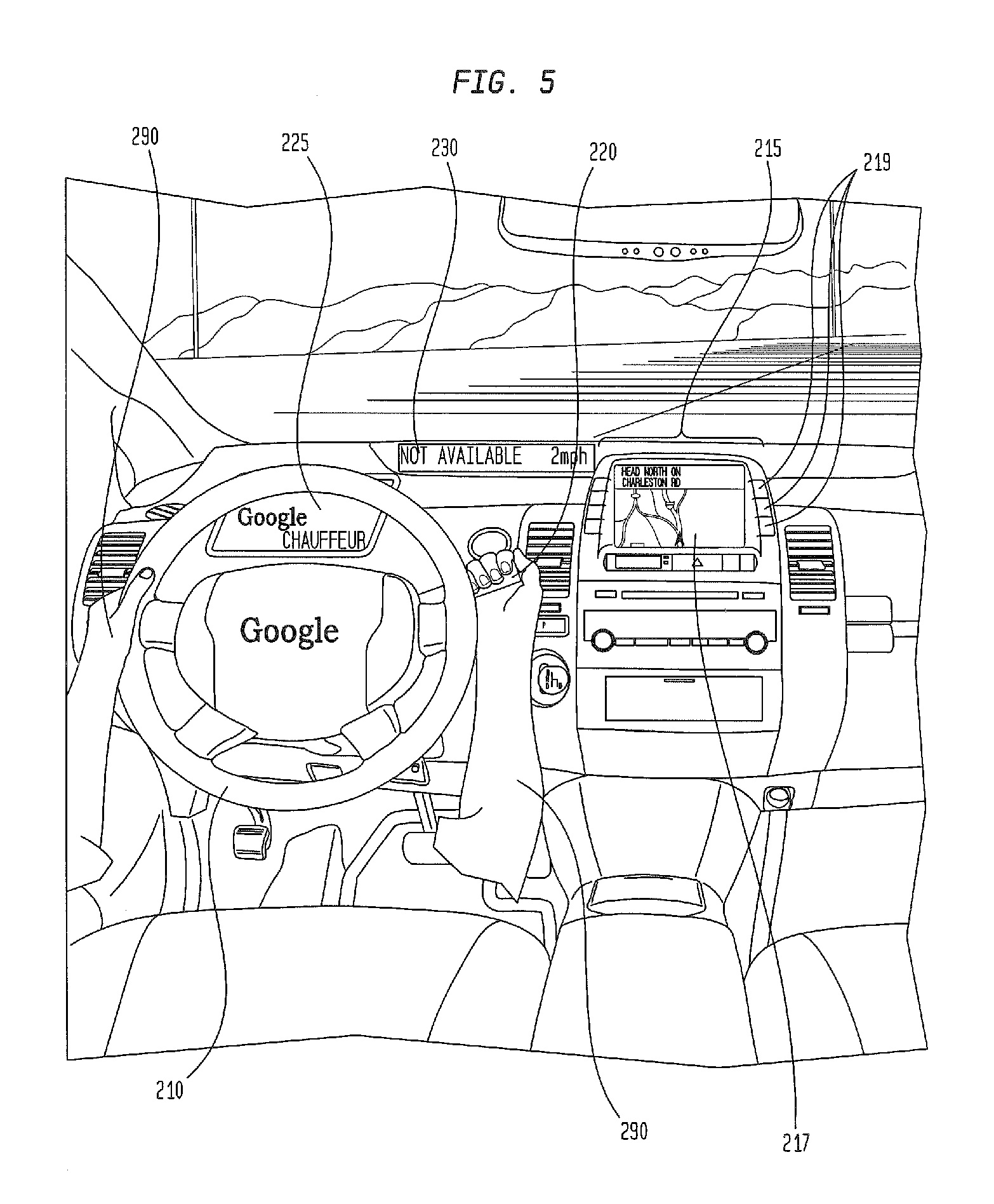Google Patents Autonomous Vehicle UI
Google was granted the rights to a user interface for its autonomous vehicle technology.
If you are expecting a futuristic look, you might be disappointed. Google stayed very much with the look and feel of today's dash layout and minor additions of information displays.
As a teenager, I imagined self driving cars to very much work like the taxi cabs in the original 1990 Total Recall movie or Sandra Bullock's police vehicle in 1993's Demolition Man. Today, we are much closer between imagination and reality and know that the actual interface of autonomous vehicles will resemble the appearance of a 1990's car cockpit much more than any designs in science fiction flicks.
Google's patented layout is virtually unchanged from the layout of a standard production car with a navigation screen. The only obvious difference is the addition of an information or status bar "to indicate the current status of vehicle". According to Google, "various other audible and visual indicators may also be employed".
The patent explains that the autonomous mode of a car is almost exclusively based on the computer's ability to determine whether vehicle is at a geographic location that allows safe self driving control. If the computer cannot identify the location, autonomous driving cannot be enabled. There are other hurdles to the autonomous driving function, "such as when the computer detects a plurality of obstacles proximate to the vehicle" and when there is enough driver input that prevents autonomous operation.
Some luxury cars today already offer a function that is very close to Google's autonomous driving model. Lane departure control and prevention, distance and brake control with automated re-acceleration ability are driver assistance feature that can already be purchased, for example, in Infiniti and Mercedes-Benz models that some may consider just one step away from a self driving car.
Contact Us for News Tips, Corrections and Feedback
Get Tom's Hardware's best news and in-depth reviews, straight to your inbox.

Wolfgang Gruener is an experienced professional in digital strategy and content, specializing in web strategy, content architecture, user experience, and applying AI in content operations within the insurtech industry. His previous roles include Director, Digital Strategy and Content Experience at American Eagle, Managing Editor at TG Daily, and contributing to publications like Tom's Guide and Tom's Hardware.
-
downhill911 Google Patents Autonomous Vehicle UI because of being worried that APPLE would. LOLReply -
sliem downhill911Google Patents Autonomous Vehicle UI because of being worried that APPLE would. LOLReply
Apple would what? They can't even make maps right. -
house70 downhill911Google Patents Autonomous Vehicle UI because of being worried that APPLE would. LOLBecause they actually made a autonomous vehicle. It's not only an idea they patented, but the actual product. That's how patents should be granted to begin with.Reply -
twelch82 I hope these are defensive rather than offensive patents, but even a company that currently has a "don't be evil" motto can change at the drop of the hat. You know, founder dies in a plane accident, investors take over and decide to milk the IP for all its worth.Reply -
g00fysmiley sounds about right, in fl we can have self driving cars legally ... still haven't seen any dealerships sellign them though, i hope they make a prius with the option i would be a customer for sureReply -
robochump downhill911Google Patents Autonomous Vehicle UI because of being worried that APPLE would. LOLReply
iHaters 2 Cents...lol. I like what Google is doing with auto industry. This is a huge investment in the future and Google may be a major player in automated cars (Smart Cars). -
I wouldn't trust a self driving car until there is a good 10 year track record fo less accidents then manual.Reply
I wouldn't trust a self driving car in the presence of manual drivers it he biggest problem. Trying to predict unpredictable humans around you.
Assuming a self driving only area, sensors imbeded into the roads, speed signs, street signs etc. Then i would be happily try it out. I wouldnt trust freeway driving until it was proven safe tho.
